Infrared light penetrates the entire body and improves vision
Did you know that near-infrared (NIR) light can penetrate the entire human body? This is especially true for the 850 nm wavelength, which is one of the reasons why Mitochondriak® devices using this wavelength in greater proportion in their devices. Today, we will look at some findings from a new study that everyone can immediately put into practice to improve their health.
Article outline:
- A new study from July 2025 and its importance (not only) for red light therapy
- How the penetration of light through the body was studied and proven
- Effect of near-infrared light on vision: it improves color vision and cones
- Why it works (Spoiler: it improves mitochondria in the cones of the eye)
- Conclusion and challenge for you – how to apply light in practice to improve (not only) your eyesight.
A new study from July 2025 and its importance (not only) for red light therapy
In a new study recently published in Scientific Reports, scientists confirmed that sunlight—specifically, near-infrared light (NIR)—can penetrate deep layers of the human body, even through the chest and skin. In laboratory measurements, light could even be detected on the backs of participants, confirming its deep body penetration. [R, R] For our regular readers, Mitochondriaks, this shouldn’t be surprising, as it’s well known that mitochondria respond positively to longer wavelengths.
However, this study brings new evidence and mechanisms, as it showed not only that near-infrared light truly penetrates the whole body, but also that light works systemically. In the experiment, near-infrared light was able to improve the participants’ eyesight even without direct exposure to the eyes.
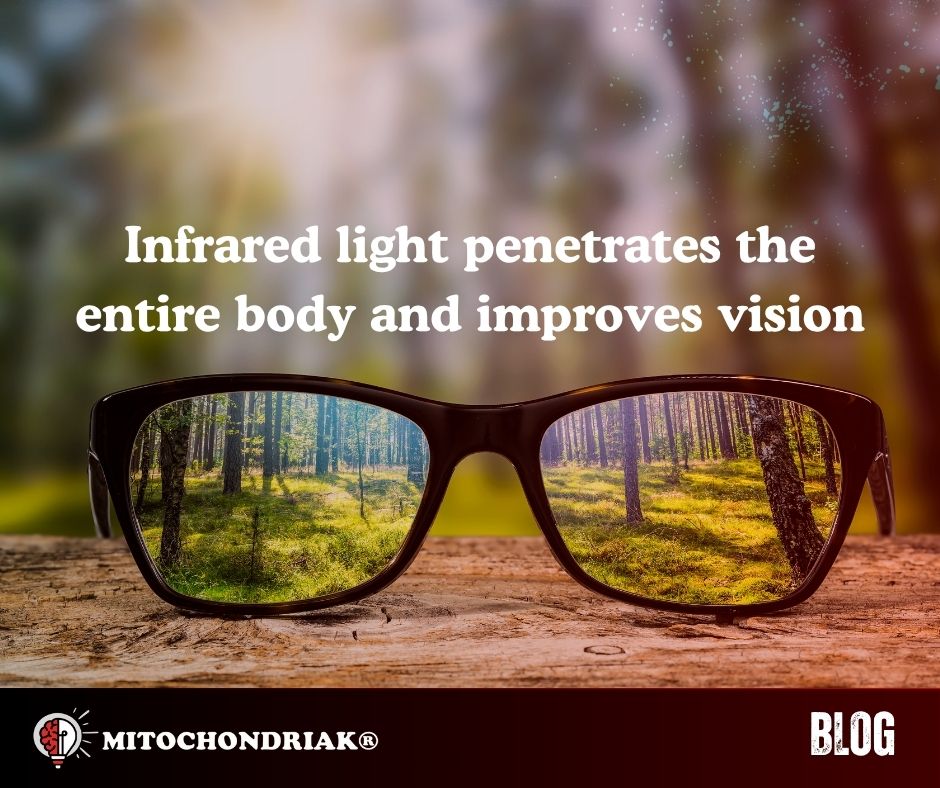
How scientists proved the penetration of light through the body
The scientists exposed the participants’ chests to sunlight between 11:00 and 13:00, using a spectrometer and an infrared camera. A box placed on the front side captured light that passed through the body and was visible even on the back side. They then also tested participants using an LED infrared panel with 850 nm (NIR, just like in Mitochondriak® devices) applied to the back for 15 minutes. The results showed that the light was able to penetrate through clothing and even through the chest to the back.
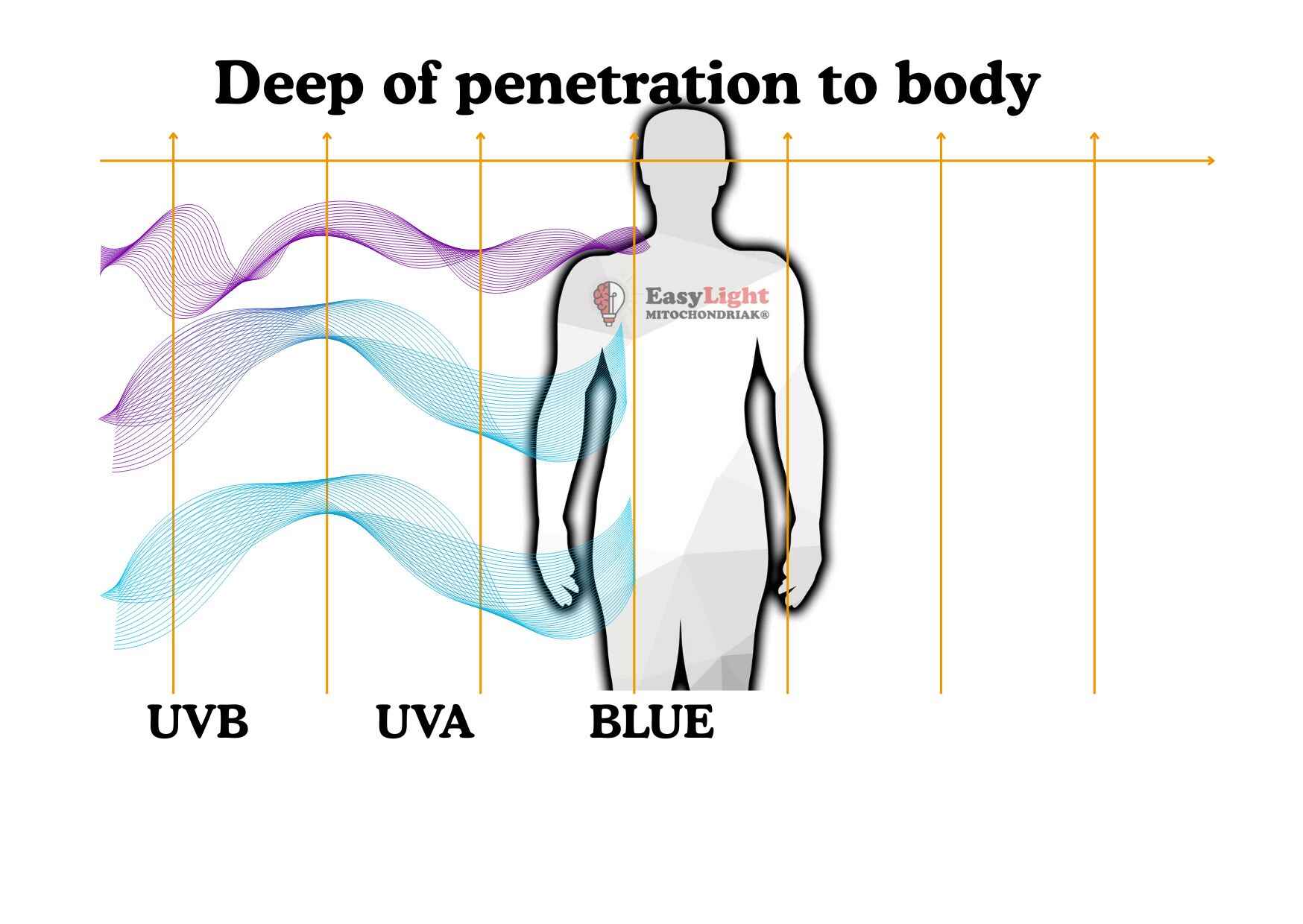
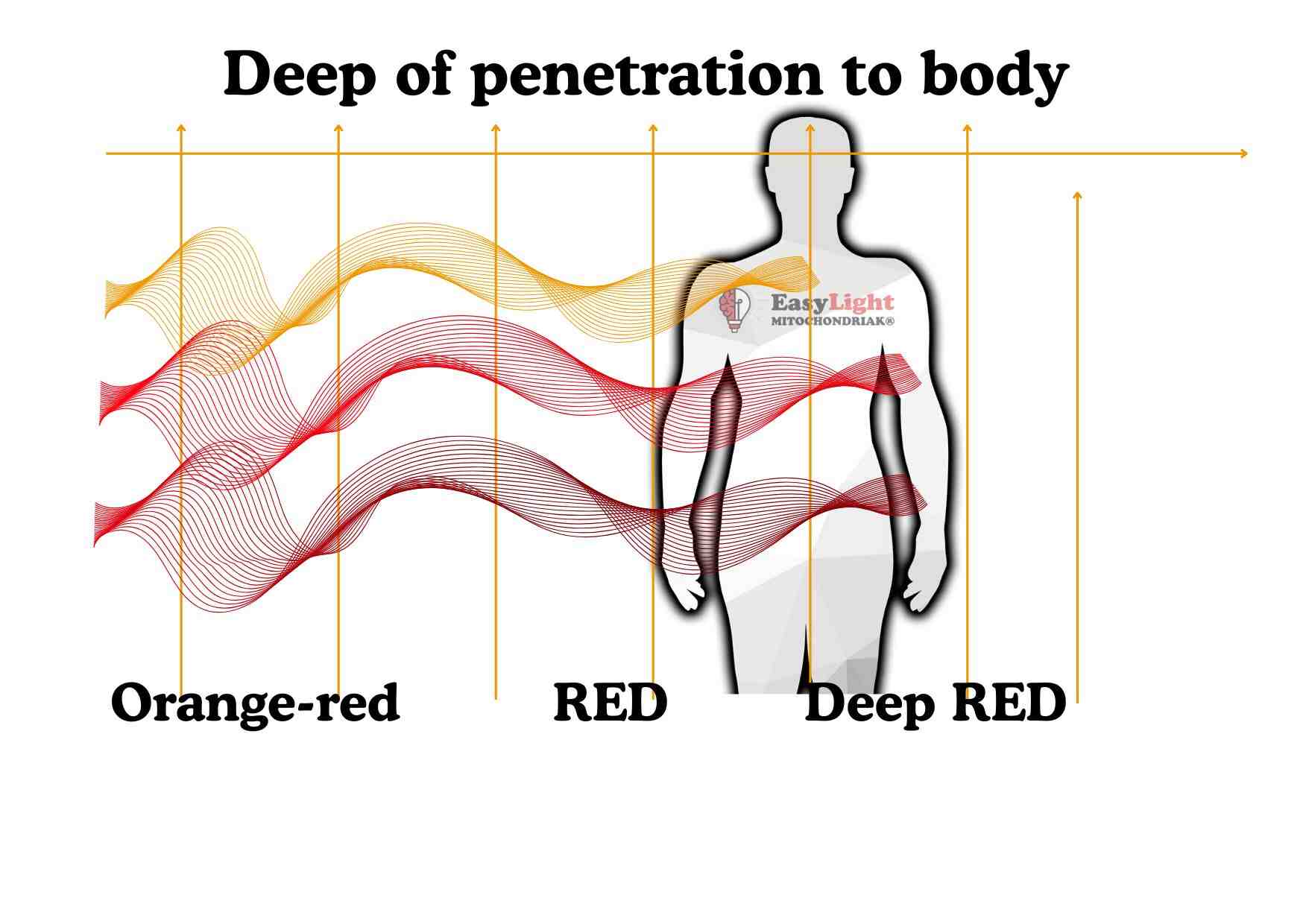
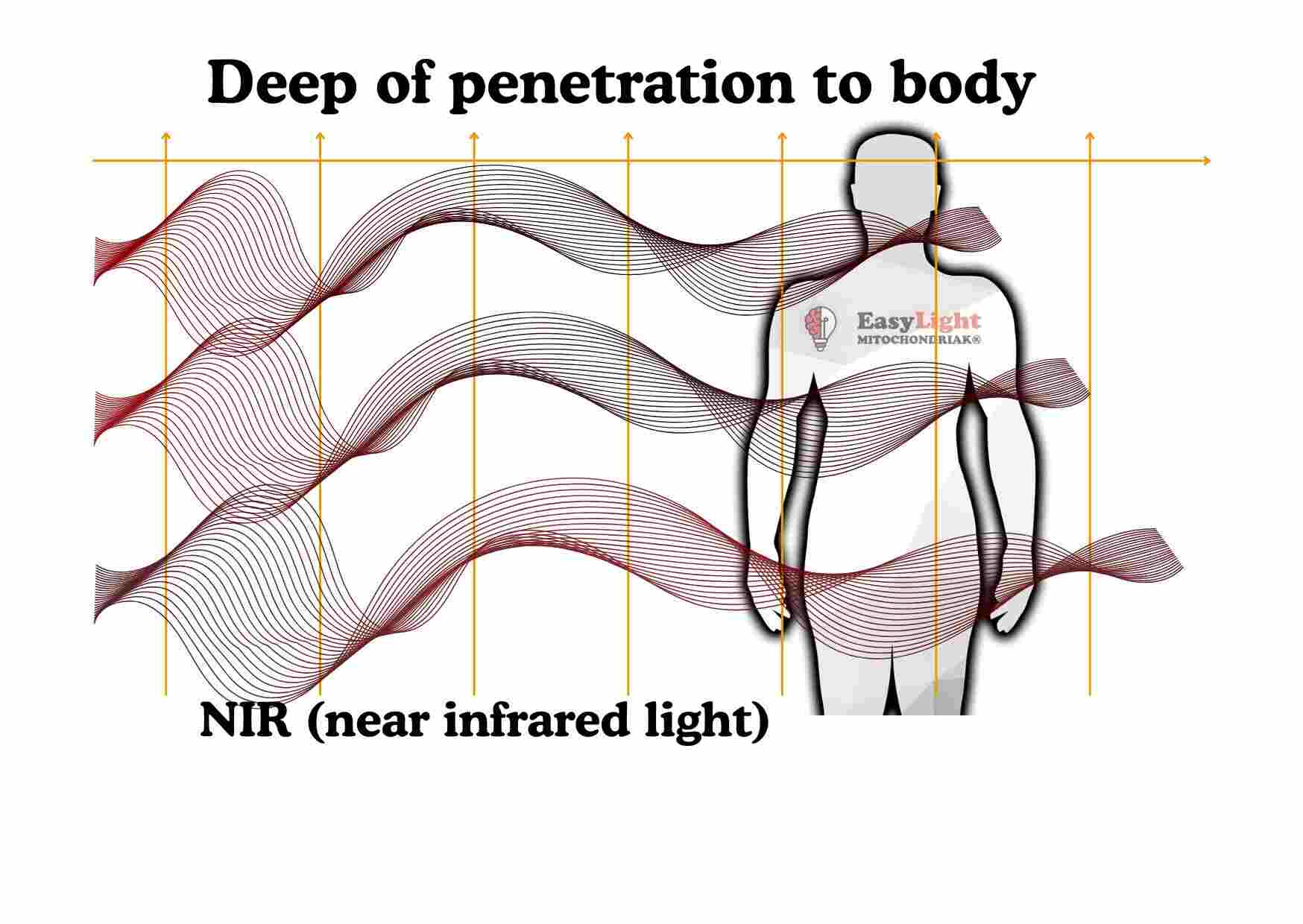
The image shows the relative penetration of different wavelengths of light through the skin.
Effect of light on vision: color vision and cones
Color vision and contrast thresholds were measured for participants before and 24 hours after light exposure. In simple terms, the study measured their color vision, then they were exposed for 15 minutes to 850 nm light, and then measured again for 24 hours after, revealing something remarkable!
Not only did the light improve color vision for participants, but vision also improved slightly in those who were not directly exposed to the light in their eyes (their heads were covered and only the torso was irradiated).
- Scientists found that visual perception improved significantly due to mitochondrial support in the cones (especially the red-sensitive L‑cones), which tend to decline with age.
Why it works (mitochondria in cones) and why our eyes need near-infrared light
Our eyes, retina, and especially cones (the photoreceptors responsible for color vision) contain a lot of mitochondria. In the eye we have 3 types of cones (one sensitive to blue, one to green, and one to red light), and it’s the latter that are most prone to degeneration with age. Near-infrared light around 850 nm activates the electron transport chain in mitochondria, improving their production of water and energy. This leads to increased ATP production, better cellular energy, and subsequently, better visual function. The effect was systemic—light energized mitochondria even through the skin and clothing, without direct irradiation of the eyes.
Source: https://www.uspornaziarovka.sk/index-farebneho-podania-ra-cri/
Conclusion and a practical challenge for readers!
These results suggest new possibilities for the therapeutic use of near-infrared light, such as for vision support or overall mitochondrial vitality—simply through the skin, back, or clothing. Thus, sunlight can support the body both deeply and systemically.
Want to improve your vision? Try getting 5 to 15 minutes of morning sunlight every day—you don’t even need to look at the sun. Just let the light fall on your back or chest. And for those who can’t regularly use sunlight, you can reach for Mitochondriak devices.
Tip for you: Do you realize the importance of near-infrared light for your health, want to supplement it indoors, but are not sure which Mitochondriak® product to choose? Let’s find out together with our simple guide.
References and studies used:
- Teraphongphom, N., et al. (2017). Intraoperative fluorescence imaging in head and neck cancer: current and future perspectives. Frontiers in Oncology, 7, 55. DOI: 10.3389/fonc.2017.00055
- https://pubmed.ncbi.nlm.nih.gov/40628952/
- https://www.nature.com/articles/s41598-025-09785-3
.png)
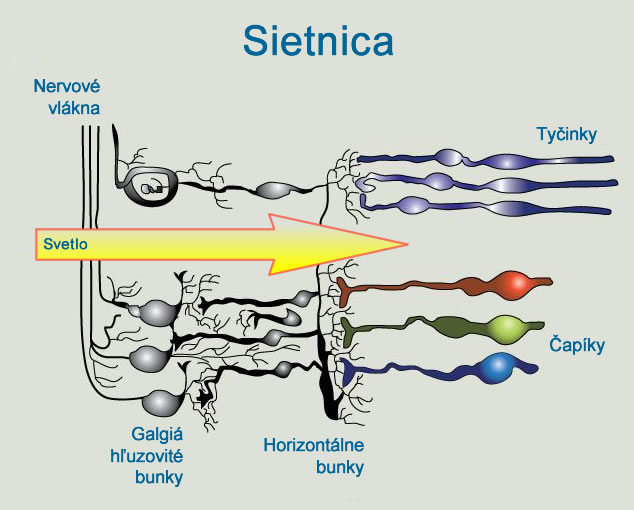
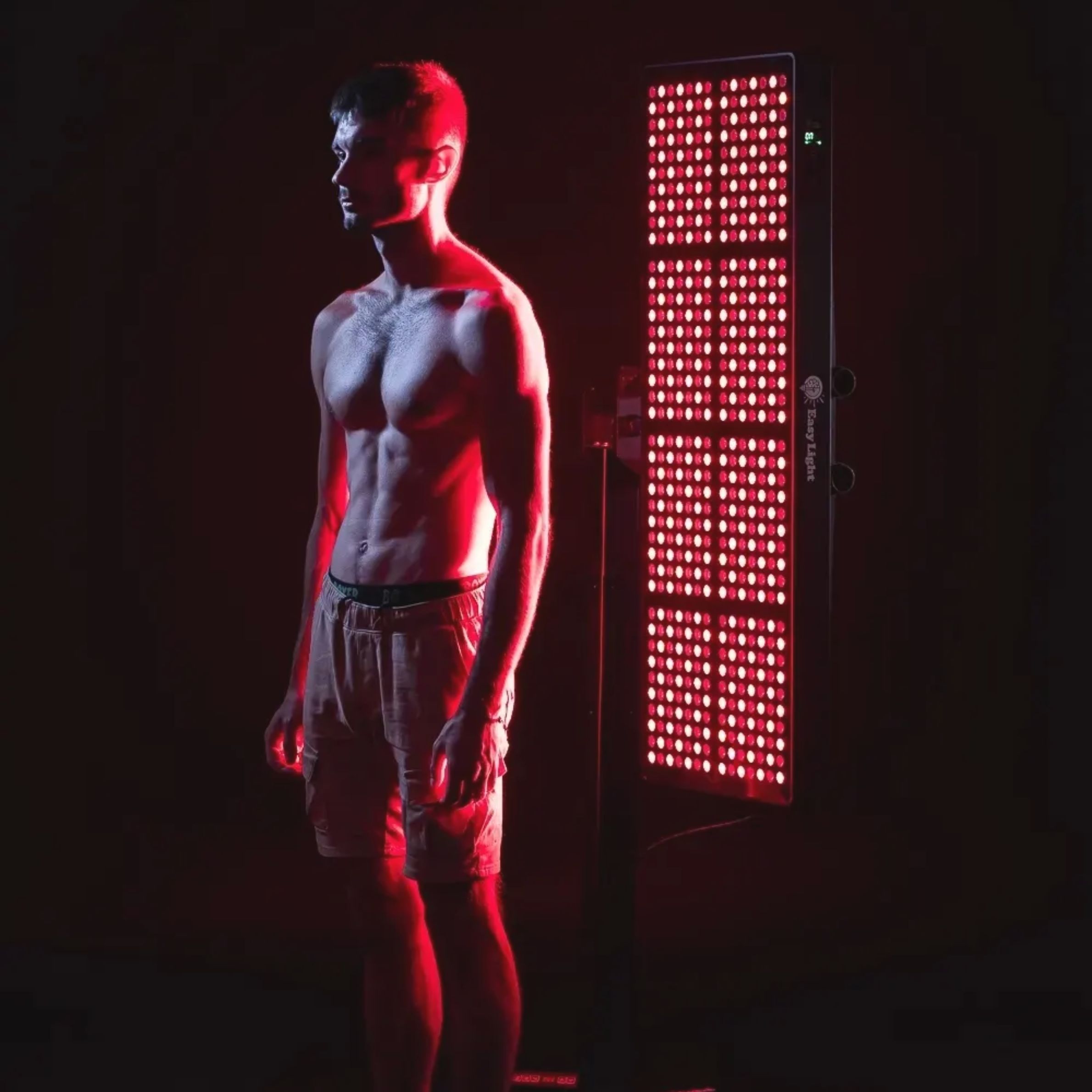
.jpg)
.jpg)
.jpg)